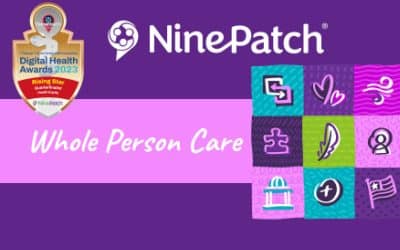Impact of z59.0 Housing and Economic Circumstances
Home » Blog » Care Coordination »

z59.0 homeless ICD-10 is one of ten z-code categories in a system that relates SDOH (social determinants of health circumstances) to HRSN (health-related social needs). Screeners who identify concerns related to the z59.0 code series can establish a lifeline of support for persons experiencing housing instability and economic circumstances by initiating social and clinical closed loop referrals.
A wide range of screening tools exist to address health equity. CMS, The Joint Commission, NCQA, state Medicaid, and other organizations are collaborating to develop consistent methods to collect and use data.
NinePatch® supports local community efforts to link SDOH circumstances with value-based care goals. The use of care coordination software with robust privacy, consent, and closed loop referral capability means that providers can focus on patient centered care and organizational metrics of success.
What Causes Homelessness
If you live in California, New York, Texas, Washington, or Florida and find yourself near a freeway on-ramp, underpass, busy intersection, or downtown you are more likely to encounter a homeless person.
If you have never been homeless, your perception of homelessness may be limited to the chronically homeless. If you work in social or clinical care, you may work with homeless individuals experiencing a variety of circumstances.
You might wonder what causes homelessness. The CDC’s National Center for Health Statistics has identified z59.0 homeless icd-10-cm diagnosis codes that are listed below. Let’s take a look at factors that can result in becoming homeless.
Factors influencing health status and contact with health services and community based organizations
- Single adults may struggle with access to affordable housing or experience job loss. Unexpected situations like a temporary financial crises, or the diagnosis of a serious health condition can result in homelessness.
- Families and children are affected by job loss, balancing work and childcare schedules, difficult household relationships, divorce, violence, or abuse.
- The lives of veterans can be complicated by PTSD (post traumatic stress disorder), traumatic brain injuries, or chronic diseases. Seeking employment and re-establishing relationships may also be challenging when re-entering civilian life.
- Aging populations face many financial challenges, such as medical debt, paying for prescriptions, and chronic health conditions. Social factors, such as a lack of food, transportation, or a rising cost of living, can further complicate their situation. The loss of a caregiver or death of a loved one can also have a significant impact.
- Youth and young adults can have many different experiences which may include involvement with child welfare or juvenile justice systems. Other circumstances may include mental health or substance use disorders, ACES (adverse childhood events), disabilities, or special needs.
- Many of the individuals you see living on the streets are likely to be chronically homeless. These are people who have been homeless for more than a year. Most experience mental illness, substance use disorders, or a have a physical disability. If you see the homeless with a pet, that pet provides companionship and safety from street crime.
- Re-entry for post-incarceration populations benefits from care coordination between clinical and social care organizations. Coordinating housing and access to employment, social support, health care, behavioral, or substance abuse treatments improves re-entry success rates.
Z59.0 Homelessness ICD-10 Codes
Homelessness is a traumatic experience. Unexpected life circumstances can result in individuals becoming temporarily or chronically homeless.
What would you do if you lost everything today? How would you survive without a safe place to sleep, access to food, clothing, or hygiene?
Due to the embarrassment or stigma of being homeless, individuals may hesitate to seek support from community organizations. Homeless persons can experience violence or use hospital emergency rooms as their primary source of medical care.
Community-based staff participating in SDOH assessments, physicians, behavioral and mental health providers, and others can support access and care for the homeless by identifying ICD-10 specific codes in the z59.0 series. These include:
- Z59.0 Homelessness unspecified
- Z59.01 Sheltered homelessness
- Z59.02 Unsheltered homelessness
- Z59.1 Inadequate housing
- Z59.2 Discord with neighbors, lodgers, and landlord
- Z59.3 Problems related to living in residential institution
- Z59.41 Food insecurity
- Z59.48 Other specified lack of adequate food
- Z59.5 Extreme poverty
- Z59.6 Low income
- Z59.7 Insufficient social insurance and welfare support
- Z59.811 Housing instability, housed, with risk of homelessness
- Z59.812 Housing instability, housed, homelessness in past 12 months
- Z59.819 Housing instability, housed unspecified
- Z59.82 Transportation insecurity
- Z59.86 Financial insecurity
- Z59.87 Material hardship
- Z59.89 Other problems related to housing and economic circumstances
- Z59.9 Problem related to housing and economic circumstances, unspecified
Programs to address homelessness exist in every state. One example is the Housing and Homelessness Division (HHD) within the California Department of Social Services (CDSS).
What It’s Like to Be Homeless
Not all homeless individuals permanently live on the street. Community and clinical organizations with SDOH programs coordinate care and initiate closed loop referrals to provide access to homeless shelters, employment services, food banks, community health centers and other programs.
Below is a description of what it’s like to suddenly become homeless from a man who lost his job. He found shelter at a rescue mission and participated in a back to work program.
“Being homeless is something that you can’t understand—when it first happens to you—because it’s a shock. Wow, I’m on the streets. You’re dealing with people on the streets that are addicted to drugs. You’re dealing with people that are watching you to rob you. It’s hard to explain in words.”
How Social Determinants of Health Circumstances Translate to Medical Needs
z59.0 circumstances translate to health-related concerns resulting from housing, food, transportation, and income insecurity. CMS has proposed a change in the severity level designation for SDOH code z59.0 to comorbidity in FY2024. This is because many homeless people have multiple chronic illnesses.
Documentation of a z59.0 homeless ICD-10 code in an electronic health record can trigger coding to substantiate the need for care and treatment for multiple conditions. For example, if you are a billing or medical coder entering z59.0 and ICD-10 E 44 for coding (moderate protein-calorie malnutrition), the individual may also have diagnoses for skin infections or diabetes.
Considering these diagnoses and potential needs, a care manager may use a SDOH software platform to initiate closed loop referrals to a nurse educator for diabetes management, a home health agency for wound care, a food bank, a transportation service, a homeless shelter, and a work program.
The Connection Between Homelessness, Chronic Disease, Mental Health, and Substance Use Disorders
Co-occurring conditions like chronic disease, mental health, and substance use disorders demonstrate why helping the homeless is important.
- According to AHRQ, “people with mental health and substance use disorders have a higher prevalence of other chronic conditions such as cardiovascular disease, stroke, high blood pressure, diabetes, cancer, HIV and hepatitis.”
- The Substance Abuse and Mental Health Services Administration (SAMHSA) estimates that roughly 50% of the homeless suffer from co-occurring substance use problems.
- Studies confirm that 25% of persons experiencing experiencing homelessness have a diagnosis of at least one serious mental illness.
Illness or injury increase emergency room use and hospitalizations. Post-discharge follow ups with clinical or social care providers can be challenging. This is often because individuals lack housing or a consistent method for contact.
Creating Partnerships to Support Homeless Initiatives
The needs of the homeless are wide-ranging. To effectively support the homeless, it is necessary to form partnerships between various social, health, behavioral, and mental health organizations.
NinePatch offers white-labeled SDOH software solutions and community convener services to bring local communities together. The Whole Person Care platform supports customization to increase awareness, referrals, and utilization of local programs and services.
To learn more, schedule a software demo today
Stay Up To Date
NinePatch® Recognized as Quarterfinalist for the Digital Health Hub Foundation: Digital Health Awards
NinePatch is a Rising Star in the Health Equity Track KNOXVILLE,...
SDOH and Care Coordination Programs and Funding
SDOH care coordination and funding is available from federal, state,...
Whole Person Healthcare Model Insights and Opportunities
A whole person healthcare model combines physical, behavioral, and...




